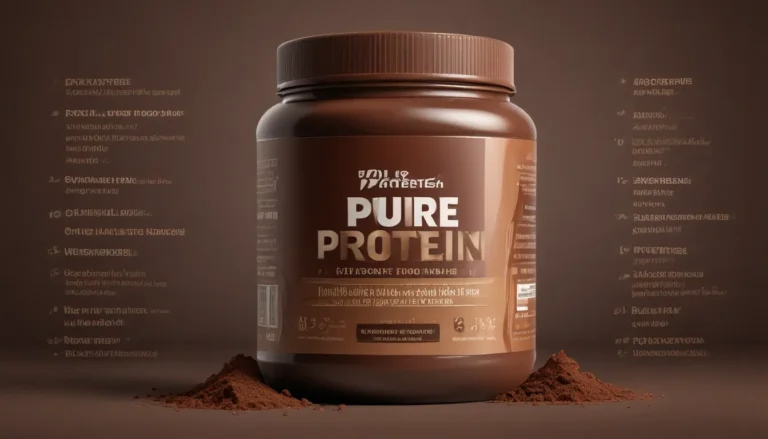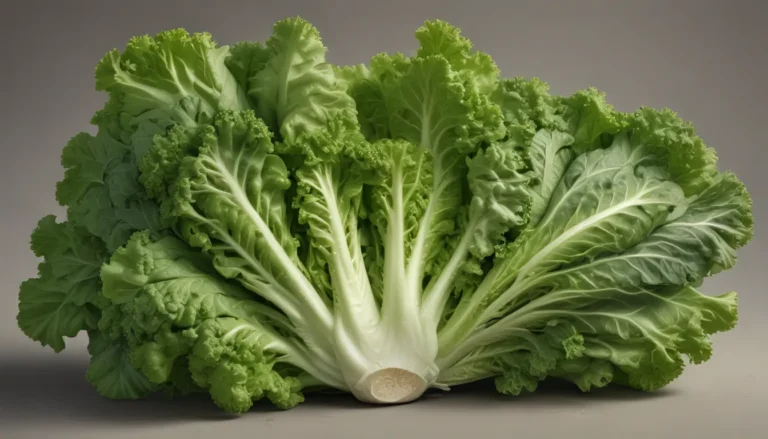The pictures in our articles might not always show exactly what the text is talking about. We use these images to make the article more interesting and eye-catching. They are there to add to the text, but not to replace it or show every detail.
Sauces play a vital role in enhancing the flavor of our favorite dishes, adding richness and depth to every bite. From tangy barbecue sauce to fiery hot sauce, the variety of sauces available can transform a meal from ordinary to extraordinary. However, it's essential to pay attention to the nutritional content of these sauces to make informed choices about our diet.
Understanding Sauce Nutrition Facts
When it comes to sauces, not all are created equal in terms of their nutritional profile. Some sauces may be packed with vitamins and minerals, while others can be high in calories, sodium, or sugar. It's crucial to be aware of the nutritional facts of the sauces we consume to maintain a balanced diet. In this article, we will explore the nutritional information of 19 popular sauces, shedding light on their calorie content, fat content, sodium levels, sugar content, and any other important information that can help you make informed choices about the sauces you use in your cooking or as condiments.
Making Informed Sauce Choices
- Watch out for added sugar: Barbecue sauce and teriyaki sauce are often loaded with added sugars. Opt for lower sugar options or consider making your own homemade sauce to control your intake.
- Choose healthier options: Consider incorporating hot sauce for a metabolism boost or pesto sauce for healthy fats. Be mindful of high sodium levels in sauces like soy sauce.
Exploring the World of Sauces
Tomato Sauce: Low in Calories
Tomato sauce is a delicious and healthy option that is surprisingly low in calories. With only about 20 calories per serving, it is a guilt-free addition to your favorite meals.
Barbecue Sauce: Contains Added Sugar
While barbecue sauce is a popular choice for grilled meats, it often contains added sugars. Be mindful of your intake, as one serving of barbecue sauce can contain around 10 grams of sugar.
Hot Sauce: Boosts Metabolism
Hot sauce, known for its spicy kick, can actually help boost your metabolism. The compound capsaicin found in hot chili peppers has been shown to increase calorie burning and reduce appetite.
Soy Sauce: High in Sodium
Soy sauce adds a savory flavor to dishes but contains a high amount of sodium. One tablespoon of soy sauce provides about 900 milligrams of sodium.
Pesto Sauce: Offers Healthy Fats
Pesto sauce is rich in healthy fats from ingredients like fresh basil, pine nuts, Parmesan cheese, and olive oil. These fats offer numerous health benefits, including improved heart health and reduced inflammation.
Mustard Sauce: Low in Calories and Fat
Mustard sauce is a great option for adding flavor without the extra calories and fat found in other condiments.
Ranch Dressing: High in Calories and Fat
Ranch dressing is a favorite for salad lovers but can be high in calories and fat. Be mindful of portion sizes when enjoying ranch dressing.
Teriyaki Sauce: Contains Added Sugar
Teriyaki sauce, commonly used in Asian cuisine, often contains added sugar. Opt for brands with less added sugar or make your own teriyaki sauce.
Alfredo Sauce: Rich and Creamy
Alfredo sauce is a classic creamy sauce, made from butter, cream, and Parmesan cheese, that adds a rich and indulgent flavor to pasta dishes.
Salsa: Low-Calorie and Flavorful
Salsa, made from a combination of tomatoes, onions, peppers, and herbs, is a low-calorie option packed with flavor.
Tartar Sauce: Popular Seafood Condiment
Tartar sauce is commonly paired with seafood and offers a tangy flavor that complements fish dishes perfectly.
Hollandaise Sauce: Classic for Eggs Benedict
Hollandaise sauce is a rich and creamy sauce traditionally used in Eggs Benedict, adding a velvety texture and tangy flavor to the dish.
Sriracha Sauce: Spicy Kick
Sriracha sauce, a popular Thai hot chili sauce, adds a fiery and tangy flavor to dishes and has gained a cult following among spice enthusiasts.
Piri Piri Sauce: Bursting with Flavor
Piri piri sauce, originating from Portugal, is a spicy and vibrant sauce made from African bird’s eye chili peppers, garlic, lemon, and various herbs and spices.
Chimichurri Sauce: Fresh and Herbal Delight
Chimichurri sauce, a popular condiment in Argentinean cuisine, offers a vibrant green color and bold herbaceous flavor for grilled meats.
Honey Mustard Sauce: Sweet and Tangy
Honey mustard sauce combines the sweetness of honey with the tanginess of mustard and pairs well with a variety of dishes.
Hoisin Sauce: Depth to Asian Dishes
Hoisin sauce, commonly used in Chinese cuisine, adds a complex flavor profile to stir-fries and marinades.
Buffalo Sauce: Spicy Punch
Buffalo sauce is known for its spicy kick and tangy flavor, making it a popular choice for dishes like buffalo wings.
Thousand Island Dressing: Creamy Tang
Thousand Island dressing is a creamy and tangy topping for burgers and salads, made from a combination of mayonnaise, ketchup, pickles, and spices.
Making Healthy Choices with Sauces
Understanding the nutritional content of sauces can help you make informed choices about your dietary intake. While enjoying a sauce as part of your meal can add flavor and excitement, it's essential to be mindful of its nutritional value. By incorporating a variety of sauces into a balanced diet, you can elevate your culinary experience while maintaining a healthy lifestyle.
Conclusion
From classics like ketchup to exotic options like sriracha, sauces can greatly enhance the flavor of our meals. However, not all sauces are created equal when it comes to their nutritional content. By considering the information provided on sauce nutrition facts labels, you can make healthier choices and adjust your portion sizes accordingly. Remember, moderation is key when it comes to enjoying sauces as part of your diet.
FAQs
Q: Are all sauces high in calories?
A: Not all sauces are high in calories. The calorie content of sauces can vary depending on their ingredients and preparation methods.
Q: Do sauces contain added sugars?
A: Some sauces do contain added sugars, especially those with a sweet or tangy flavor profile.
Q: Are sauces high in sodium?
A: Many sauces can be high in sodium, especially those with a savory or tangy taste.
Q: Can sauces be a source of vitamins and minerals?
A: Certain sauces can provide small amounts of vitamins and minerals depending on their ingredients.
Q: Are there healthier alternatives to traditional sauces?
A: Yes, there are healthier alternatives available for traditional sauces, such as yogurt-based dressings or homemade sauces with fresh ingredients.
As you explore the world of sauces, remember to enjoy them in moderation and choose wisely to maintain a balanced and flavorful diet.






